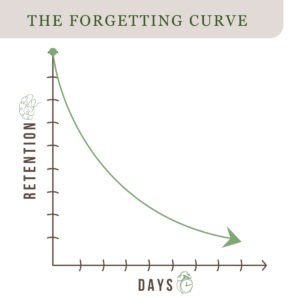Rethinking Training as More Than Just a Magical Fix
Dear readers,
Today I’m delighted to share some words of wisdom from an amazing Instructional Designer who works with The Sparks Group, Jennifer Eichenberg! Jennifer designs and develops training and leadership development curriculums, reviews training materials and makes recommendations about the most cost-effective way to move forward and is a wonderful all-around partner in our work. Plus she can facilitate and teach.
I consider Jennifer to be a unicorn in her ability to design beautiful, content-rich, effective programs and deliver them flawlessly. And, conveniently, today, April 9 is National Unicorn Day – who knew?
Enjoy Jennifer and all she has to offer.
-Jessica
Today is National Unicorn Day. It is a day dedicated to celebrating this mythical creature, whose mystic charm appeals to both children and adults. Unicorns are thought of as having magical powers to heal wounds, cure sickness and neutralize poison. They are also a symbol of good luck. This may answer why it is the official animal of Scotland and is depicted on its royal coat of arms.
On National Unicorn Day, it seems fitting to discuss how leaders often feel that training has magical powers, much like unicorns. Leaders send their employees to “get training” in hopes of the employees magically returning to their jobs 100 percent proficient at the new skill.
This is magical thinking indeed. Training can solve one problem: a lack of knowledge or skills or what we term “horizontal development.” Leaders mistakenly assume that if a team member is not doing something “right,” attending a training session will fix the problem. Effective training can increase an employee’s ability to do a new skill, but there are many reasons a team member might not be “doing it right.”
At The Sparks Group, we know that horizontal development focuses on skill building and vertical development focuses on the way we think. To develop vertically, we need experiences that push us to think and behave differently.
There is a rule in the training world that 70 percent of learning is on the job, 20 percent is learning from coworkers and colleagues, which leaves only the last 10 percent to formal learning, such as classes, workshops and materials.
While a training class can introduce new skills and provide information on when to use it, training alone is insufficient. Although learners often practice the new skills in the training session, they need more opportunities to practice and experience than the training session alone could ever allow.
Here’s another way to view this: If you were to take guitar lessons and did not practice between lessons, you would become frustrated with your level of proficiency compared to the money spent on the lessons. This is typical for organizations that attempt to measure their training return on investment. It is usually not as high as they anticipate it could be.
The Forgetting Curve indicates that information is lost over time when there is no attempt to retain it. Let’s apply this theory to my own experience trying to learn a foreign language. I imagine some of you will completely understand this example! I’ve tried to learn a language other than English three different times in my life. My excuse for not being successful is that I don’t “have an ear for a new language.” The truth is that I didn’t practice outside of repeating words out loud in a microphone to my computer. According to the Forgetting Curve, 24 hours after a one-hour language course, I’ve lost 50 to 80% of what I learned unless I use it. And after a month of not using the language, I have only retained two to three percent of the material. Is that why so many of us who “learned” Spanish in high school can only say, “?Donde esta la bibiloteca?” Hmmm…
To counter the Forgetting Curve we need to allow, and actually encourage, more practice—specifically on the job as a part of our training efforts. And who needs to be supportive of the training to encourage the team member to practice? Their supervisor!
When improving performance there are so many levers we can pull besides offering a training. Jessica and I look forward to hearing back from you about how you are currently offering training (horizontal development), on-the-job experience, and opportunities for your employees to challenge the way they think and behave (vertical development).
All the best,
Jennifer
Jennifer Eichenberg, CMCP, CPT, CTT
Instructional Designer



